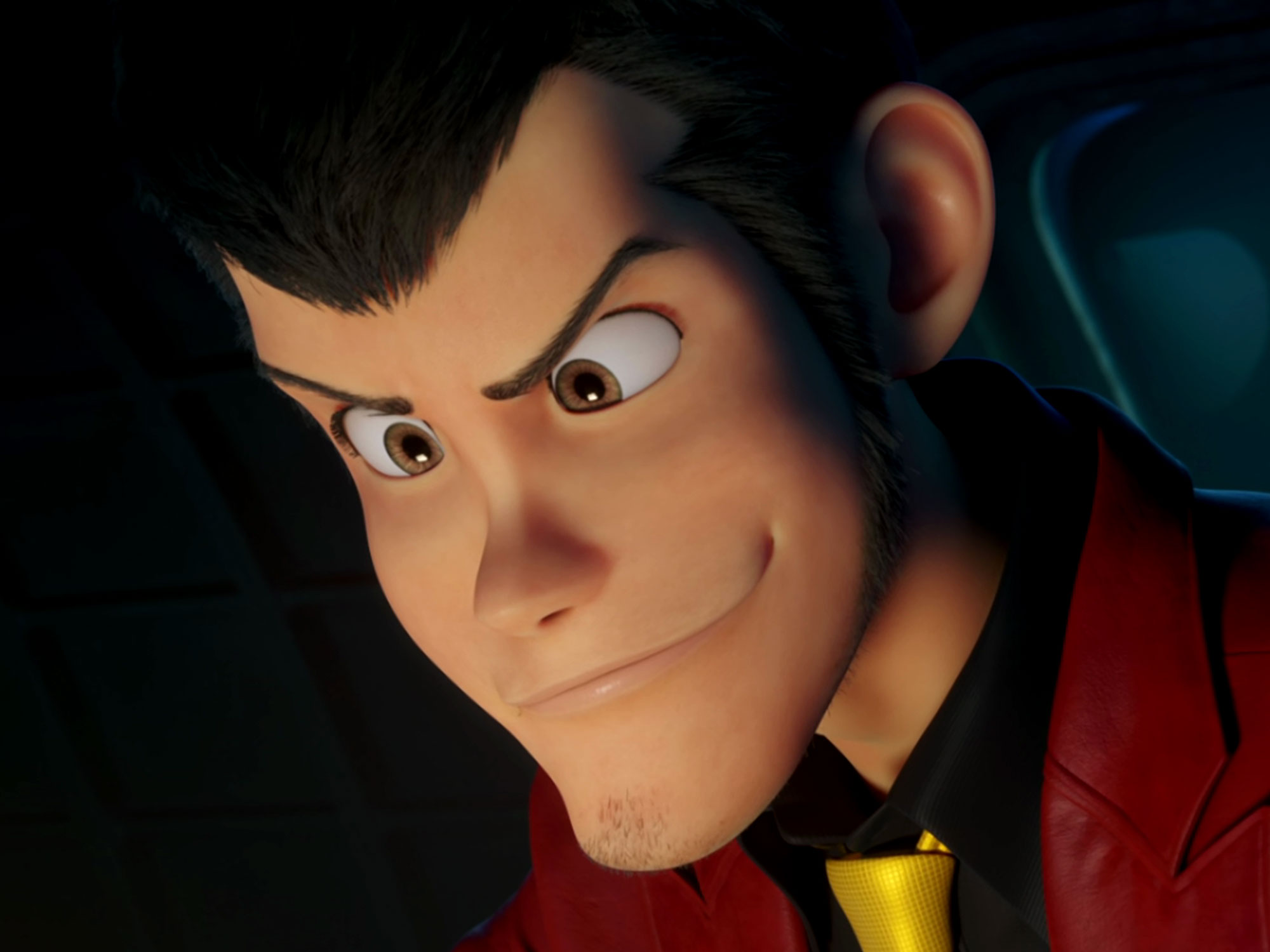
Though only offered a limited glance at what the film has in store (about 15 minutes of it, via the now online Annecy Festival), the first fully 3DCG Lupin III feature is looking incredibly slick. The latest in a 50-year history of anime based on the manga from Monkey Punch (who has since passed away), Lupin III: The First looks to honour the past and present of the iconic gentleman thief.
Its embrace of new animation technologies is well-coupled with a return to the character’s roots, taking the gang to France (the birthplace of Lupin III’s grandfather, Arsene) in pursuit of the diary of Professor Bresson (no relation to the filmmaker), a supposed guide to an immense treasure.
Despite its move into new territory with this method of animation, Lupin III: The First, directed by Takashi Yamazaki, still feels like a classic Lupin III tale, taking the story back to the 1960s (the decade of the character’s creation), and placing the eponymous gentleman thief in his classic red suit.
Those who have kept up with the many iterations of the show will be delighted at the film’s reverence towards it, including everything from Yuji Ohno’s classic opening theme to the music sting that accompanied the title card for each episode. It’s a confident reminder of one of the series’ greatest strengths: to reinvent itself with time and again without losing its original charms.
The ultra-realistic lighting and textures, plus obsession with historical treasure might immediately remind Western viewers of Steven Spielberg’s The Adventures of Tintin. Unlike that film, however, Lupin III: The First handily sidesteps the uncanny valley simply by leaning into the exaggerated art style of the original manga, continuing to highlight things such as Lupin’s monkey-like features.
Each character design translates surprisingly well to this mode of animation, as Lupin’s compatriots – the anachronistic samurai Goemon, the duplicitous Fujiko and steadfast, snarky Jigen – all feel comfortable in the third dimension, that move assisted by the return of their contemporary voice actors.
Furthermore, Lupin himself moves just as he did in the 2D animations (and as if to emphasise this, replicates an absurdly long jump across rooftops as in Miyazaki’s The Castle of Cagliostro, even with the same sound effect). Even with the near photorealistic detail of the environments that fun, vibrant cartoonishness is, at a glance, perhaps the animation’s greatest strength, defying the sterility and lifelessness that can all-too-often accompany CG.
It can be all too easy to fall into snobbishness when discussing computer animation, but even to skeptics like myself, frankly, it looks incredible. There’s perhaps a small period of adjustment for those who are already familiar with the series, but it won’t last long, as the film confidently sweeps into a dazzling, bravura opening title sequence that shows off the newfound dimensional freedom of CG imagery, swooping through clockwork puzzles and even a hole in a cigarette lighter.
Where the latest series (Lupin III: Part V) has Lupin reckoning with modern technology and the advent of the internet, Lupin III: The First is harnessing modern styles of animation to tell a flashy yet old-school caper, paying homage to the franchise’s past and present.
The post What’s old is new again in Lupin III: The First appeared first on Little White Lies.
![Forest Essentials [CPV] WW](https://s3-us-west-2.amazonaws.com/pcw-uploads/logos/forest-essentials-promo-codes-coupons.png)
0 comments